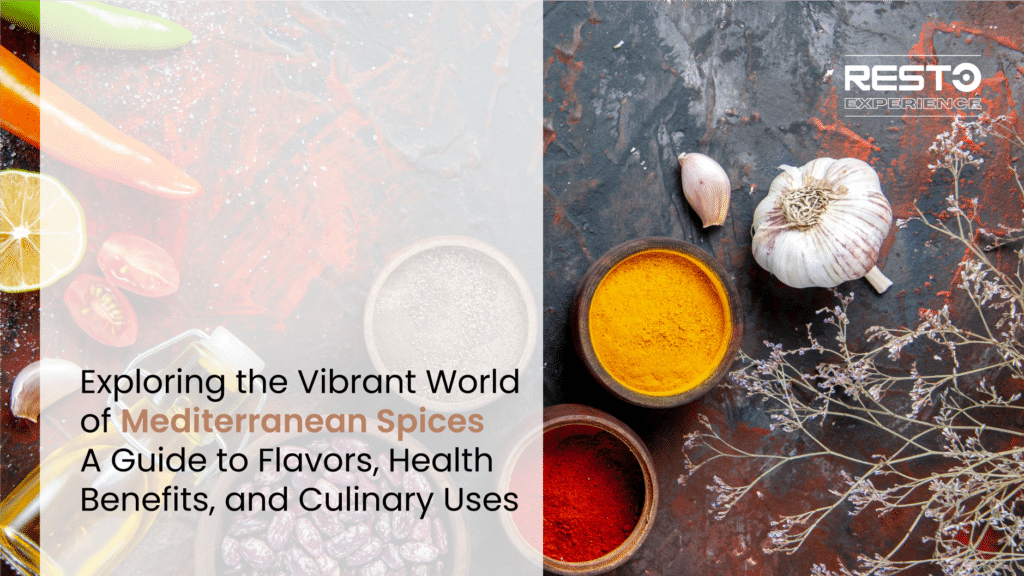The Mediterranean diet has a reputation for being one of the healthiest and most enjoyable ways of eating. One of the key ingredients of this diet is the variety of Mediterranean spices, which not only enhance the taste of dishes but also offer great health benefits.
In this guide, we’ll unravel the distinct flavors and culinary uses that have made these spices an essential part of Mediterranean cooking.
The Rich Cultural Heritage of Mediterranean Spices
Mediterranean spices form an integral part of the region’s culinary traditions and cultural heritage. For centuries, the Mediterranean has been a melting pot of diverse civilizations, and the exchange of flavors through the spice trade has left a deep mark on the region’s cuisine.

Spice markets have been hubs of commerce and cultural exchange, where spices were valued for their flavors as well as for their medicinal properties.
Mediterranean spices, such as paprika, oregano, and basil, have found their way into iconic dishes, capturing the essence of the region’s diverse cultures. These spices have become the soul of Mediterranean cuisine as they have the power to elevate even the simplest dish.
The Top 5 Must-Have Mediterranean Spices for Your Kitchen
The Mediterranean spices list is diverse, but some spices stand out as indispensable.
Here we’ll show you a list of the essential spices for Mediterranean cooking to stock your kitchen properly:
1. Oregano: The Versatile Herb with a Distinct Flavor Profile
Oregano is a herb with a strong, earthy flavor. It is a popular ingredient in Italian, Greek, and Spanish cuisine, used to flavor a variety of dishes such as pizzas, pasta sauces, and marinades.
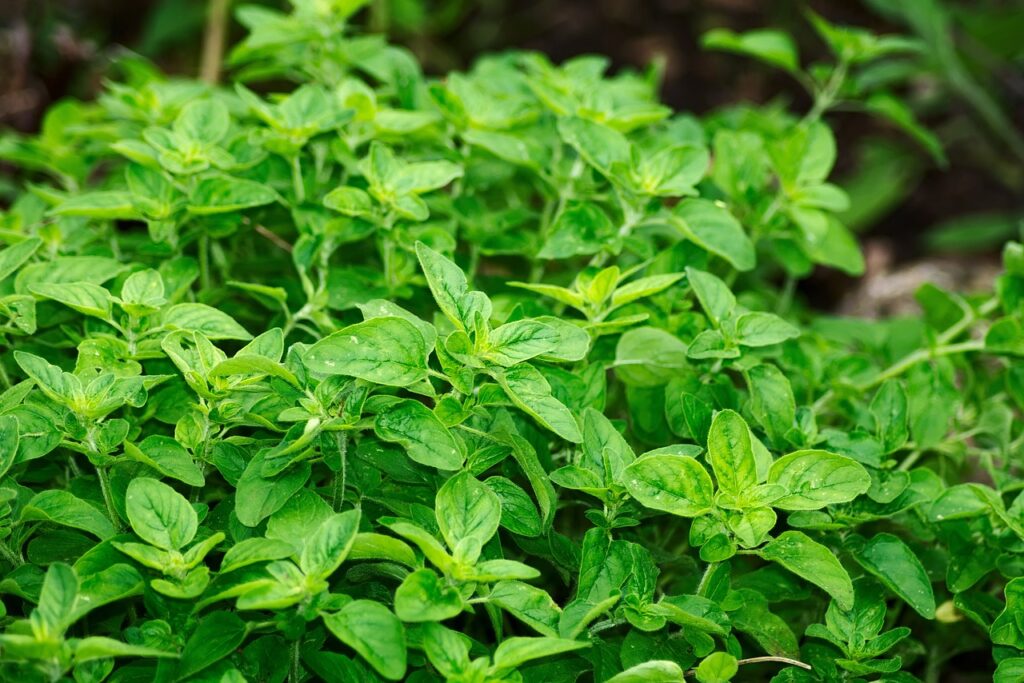
Oregano Uses in Cooking
- Seasoning: Oregano is a very versatile spice that can be used in various dishes. It’s commonly used as a seasoning for recipes that include tomatoes, olives, and olive oil. A classic ingredient in pizzas, pasta sauces, and salads.
- Herb-Infused Oils and Vinegars: It’s an excellent herb for infusing oils and different kinds of vinegar. For example, you can combine extra-virgin olive oil with dried oregano to create your own herb-infused olive oil.
- Marinades: Oregano’s aromatic qualities make it a fantastic addition to marinades for meats and fish. It can be combined with garlic, lemon juice, and other Mediterranean spices.
Health Benefits of Oregano
- Anti-oxidant Properties: Oregano is rich in antioxidants, which help fight damage from free radicals in the body.
- Anti-inflammatory Effects: Oregano oil and its components have anti-inflammatory properties that can help reduce inflammation in the body.
- Anti-microbial Properties: It contains compounds that may have antibacterial properties. A test-tube study found that oregano was effective against 23 species of bacteria, and it is thought that it may also protect against some viruses.
- Anti-cancer Properties: Some test-tube studies have shown that it contains compounds that can reduce cancer cell growth. (Keep in mind that these studies used high amounts of the herb, so studies using typical doses are needed).
Culinary Pairings with Oregano
- Tomatoes and Mozzarella: Oregano pairs well with tomatoes and mozzarella; that’s why it’s a classic ingredient in pizzas.
- Vegetable Dishes: Oregano pairs exceptionally well with vegetables, making it great for salads.
- Grilled Meats: The robust flavor of oregano complements grilled meats like lamb, chicken beef, and fish. You can create a simple oregano-based marinade or rub to season the meat before grilling.
- Soups: Oregano adds a savory flavor to soups.
- Stews: It helps to add depth of flavor and can help to tenderize the meat.
- Pasta sauce: Oregano is a key ingredient in different pasta sauces; it helps to balance out the acidity of the tomatoes.
2. Basil: A Fragrant Herb that Adds a Fresh Twist to Dishes
Basil is a herb with a sweet, peppery taste. It’s a popular ingredient in Italian cuisine, used to flavor a variety of dishes, including pizzas, pasta sauces such as pesto and salads such as caprese.
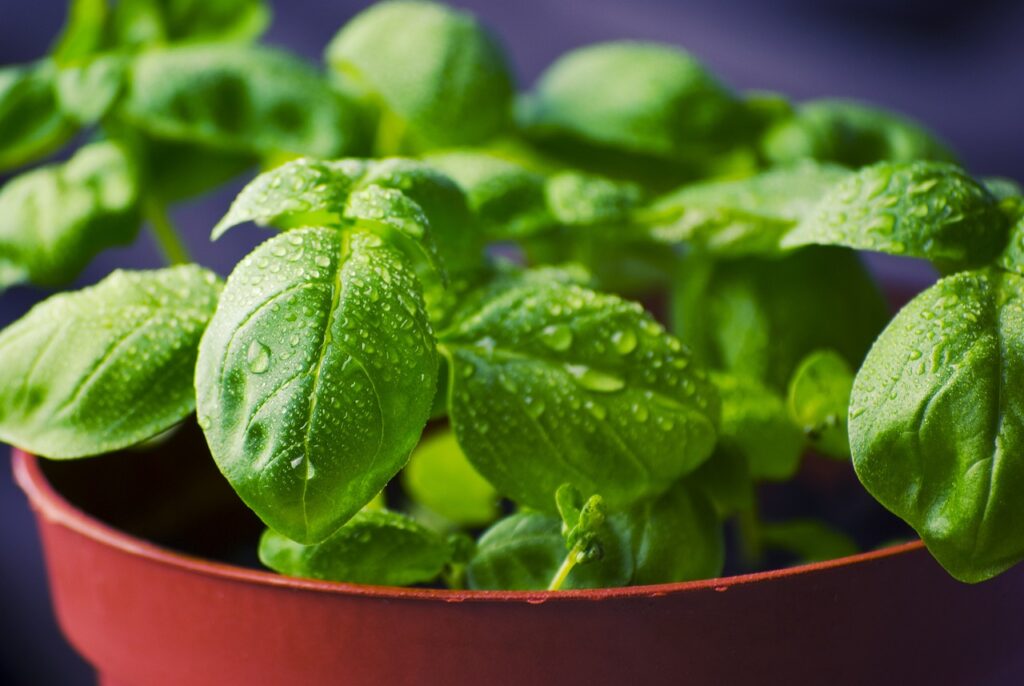
Basil Uses in Mediterranean Cuisine
- Pesto Sauce: Basil is a key ingredient in many pasta sauces such as the iconic pesto sauce. Blending fresh basil leaves with pine nuts, garlic, Parmesan cheese, and olive oil results in this green sauce that is perfect for pasta dishes and also as a spread on sandwiches.
- Tomato-Based Dishes: Basil and tomatoes form a classic culinary pairing. It adds a fresh note to tomato-based dishes like Caprese salad or tomato sauce for pasta.
- Herb-Infused Oils and Vinegars: Like oregano, basil can be used to infuse oils and vinegars. Basil-infused olive oil is excellent for salads and grilled seafood.
Health Benefits of Basil
- Vitamin K: Basil provides some nutrients, mainly vitamin K.
- Anti-bacterial Properties: Researchers showed that basil oil has anti-bacterial properties and could help treat or prevent some types of infection.
- Effects on High Blood Sugar: Some studies suggest that basil leaves may help reduce blood pressure in people with hypertension and treat its long-term effects.
- Properties on Mental Health: Basil contains properties that may help alleviate stress, anxiety, and depression, as well as increase mental alertness.
Creative Ways to Incorporate Basil into Recipes
- Basil-Infused Water: You can create a refreshing beverage by adding some fresh basil leaves to a pitcher of water. It can be garnished with lemon slices or other fruits for an extra burst of flavor.
- Basil in Desserts: Basil can be surprisingly delicious in sweet dishes. For example, you can prepare a strawberry bruschetta by combining diced strawberries, vinegar, and basil, and topping this mixture on bread with goat cheese.
- Basil-Infused Cocktails: Basil’s aromatic qualities are perfect for cocktails. Muddle basil with strawberries or cucumber, add sugar syrup, lemon juice, and mix with spirits like gin.
3. Paprika: The Fiery Spice that Adds Color and Depth to Dishes
Paprika is a spice made from dried and ground red peppers. It comes in a range of varieties from mild and sweet to smoky and hot.
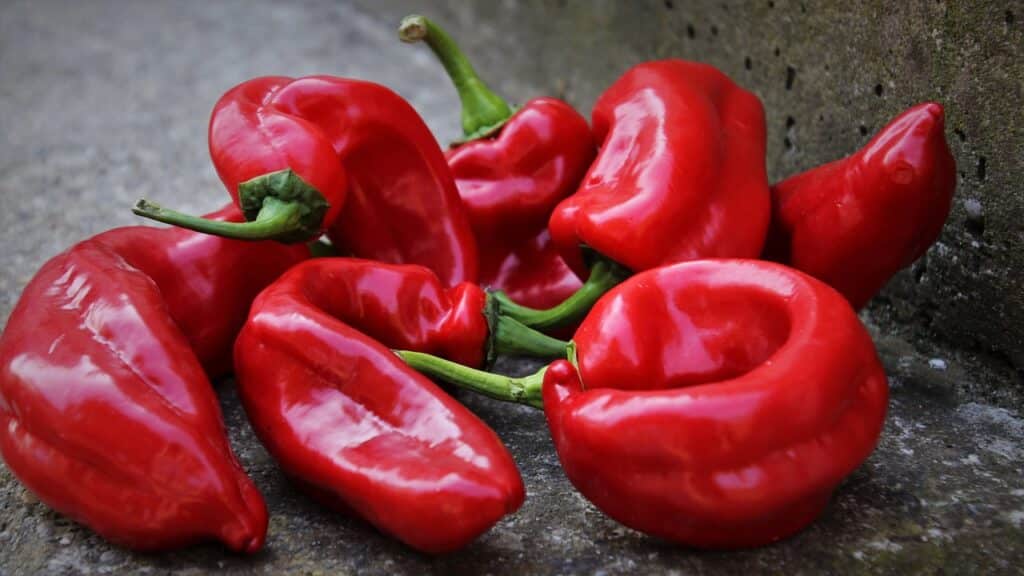
Paprika Uses in Mediterranean Cooking
- Seasoning: It is widely used in Mediterranean cooking to add a smoky, slightly sweet flavor. Very used over roasted vegetables, grilled meats, soups and stews.
- Iconic Dishes: Paprika is a key ingredient in several iconic Mediterranean dishes. For instance, in traditional Spanish dishes like paella and chorizo, or in the Hungarian dish Goulash.
Health Benefits of Paprika
- Anti-oxidant Properties: Paprika contains an array of anti-oxidants, which help protect the body’s cells from oxidative stress.
- Vitamin Boost: Paprika is a good source of essential vitamins, particularly vitamin A. 1 tablespoon boasts 19% of your daily vitamin A requirements.
- Anti-inflammatory Effects: It has also been shown to have anti-inflammatory properties that may treat pain.
- Anti-cancer Properties: Compounds of paprika, in particular capsaicin, may provide protection against a variety of cancers. (However, more studies are necessary).
Different Types of Paprika and Their Flavors
- Sweet Paprika: It’s the most common type of paprika and has a mild, slightly sweet flavor. This variety of paprika adds a vibrant red color to dishes without overwhelming them with heat. It is often used as a base flavor in many Mediterranean recipes.
- Smoked Paprika: This type of paprika is made by smoking dried peppers, which gives it a smoky flavor and aroma. It’s often used to add depth to dishes such as grilled meats and vegetables, and is particularly popular in Spanish and Portuguese cuisines.
- Hot Paprika: Hot paprika has a spicy, peppery flavor that enhances the taste of various Mediterranean dishes. It’s often used in chili peppers and salsas.
Enhancing Dishes with Paprika
- Marinades and Rubs: Create tantalizing marinades and rubs for grilled meats and seafood by incorporating paprika. The spice’s smoky or spicy notes will not only elevate the taste but also enhance the visual appeal of the dish.
- Soups and Stews: Add depth to soups and stews with paprika and enrich the overall flavor.
- Roasted Vegetables: When roasting vegetables, sprinkle some paprika over them before baking. This will infuse them with a hint of color and flavor.
- Rice and Grain Dishes: Use paprika to season rice and grain dishes like paella, pilaf, or risotto. Its warm and aromatic notes will take these dishes to another level.
4. Cumin: A Warm and Earthy Spice with a Wide Range of Applications
Cumin is a spice that has been used for centuries in Mediterranean cuisine. It has a strong, earthy flavor that pairs well with a variety of dishes such as legumes, grilled meats, and stews.
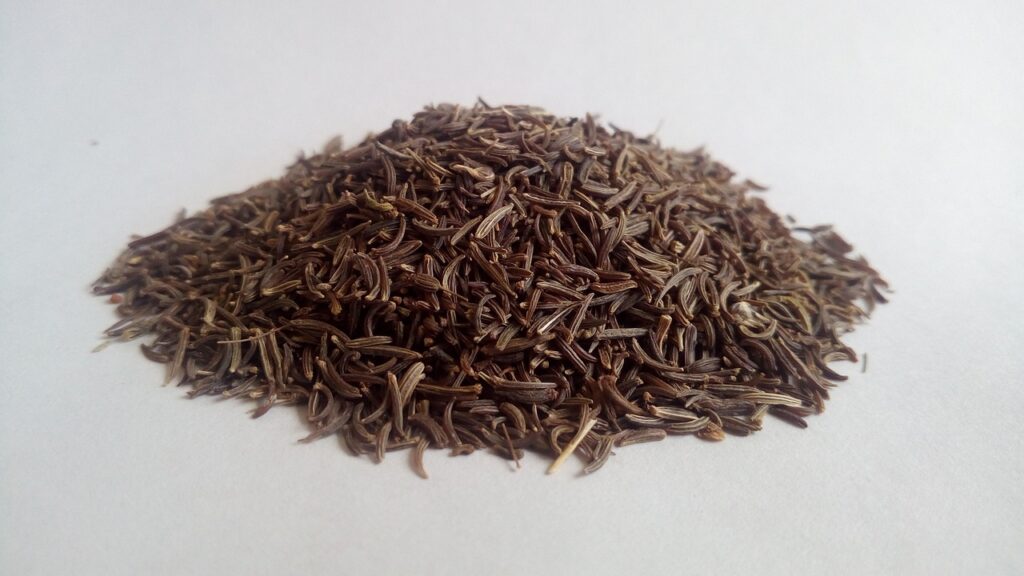
Cumin Uses in Mediterranean Cuisine
- Seasoning: Cumin is a staple spice in many Mediterranean spice blends, such as Ras el Hanout in North African cuisine. It is also frequently used as a standalone seasoning for various dishes, including grilled meats, roasted vegetables, and rice-based dishes.
- Legumes: Cumin’s warm and earthy flavor complements legumes and pulses like chickpeas, lentils, and beans. It’s commonly used in Mediterranean dishes like hummus, falafel, and hearty stews.
- Herb and Spice Infusions: Cumin can be infused into oils, marinades, and sauces. It adds aroma and enriches the taste of the final dish.
Health Benefits of Cumin
- Digestive Aid: Cumin has been traditionally used for indigestion, as it can stimulate the production of digestive enzymes.
- Anti-oxidant Properties: Cumin is a rich source of anti-oxidants, which help stabilize free radicals.
- Anti-Inflammatory Effects: Several components of cumin may have anti-inflammatory effects.
- Iron: Cumin is a good source of nutrients, and is very dense in iron. 1 teaspoon can provide almost 20% of the daily iron requirements.
Pairing Cumin with Other Mediterranean Spices
- Cumin and Coriander: Cumin and coriander are a classic pairing in Mediterranean cuisine. This combination is particularly used in spice blends, marinades, and curries.
- Cumin and Paprika: The earthiness of cumin pairs well with the smoky or spicy notes of paprika. Together, they create a flavorful base for many Mediterranean dishes, especially those that include grilled meats and vegetables.
- Cumin and Turmeric: Combining cumin with turmeric, another common Mediterranean spice, provides a golden hue to dishes and enriches them with a warm and earthy flavor.
Using cumin in Both Savory and Sweet Recipes
Cumin is mainly used in savory dishes, as it elevates the flavors of meats, vegetables, legumes, and rice. However, it can be a surprising addition to certain sweet recipes. In North African and Middle Eastern cuisines, cumin is used to flavor cakes, cookies, and pies.
5. Cinnamon: The Sweet and Spicy Spice that Elevates Mediterranean Desserts
Cinnamon is a popular spice used in Mediterranean cuisine, especially in desserts. It has a warm, sweet flavor that pairs well with a variety of ingredients.
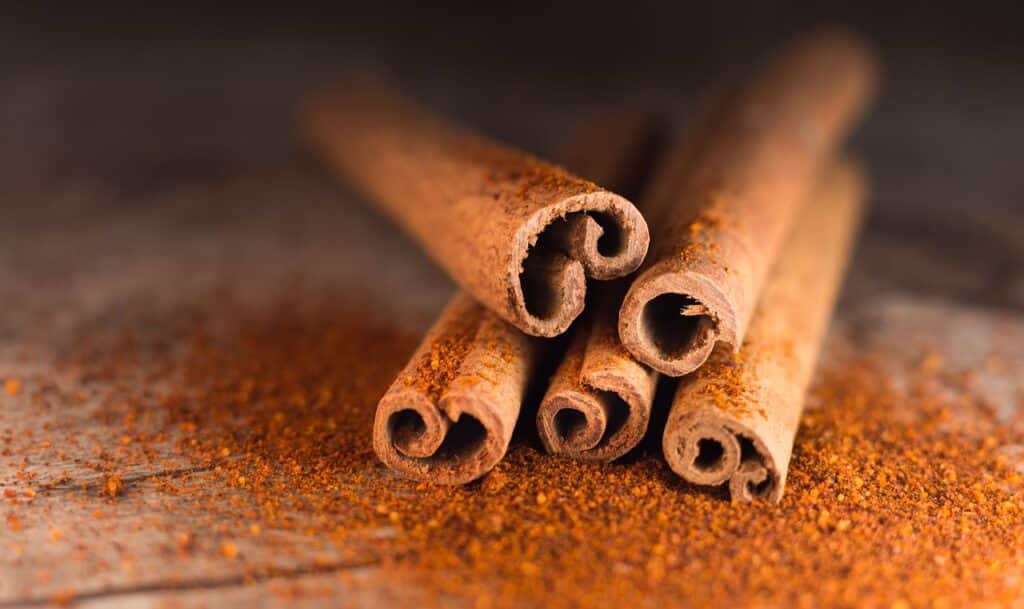
Cinnamon Uses in Mediterranean Desserts
- Sweet Pastries: Cinnamon is a star spice in Mediterranean sweet pastries like baklava in Greek cuisine.
- Rice Puddings: It is a common addition to Mediterranean rice puddings, such as the Spanish arroz con leche.
- Fruit-Based Desserts: Cinnamon complements fruit-based desserts like compotes, poached fruits, and fruit pies.
Health Benefits of Cinnamon
- Anti-oxidant Properties: Cinnamon is packed with anti-oxidants.
- Heart Health: It has been associated with improved heart health, as it may help reduce cholesterol and triglycerides levels, and lower blood pressure.
- Insulin Regulation: Some studies suggest that cinnamon has the potential to improve insulin sensitivity and reduce insulin resistance, which may improve blood sugar control.
- Anti-Inflammatory Effects: The active compounds in cinnamon have anti-inflammatory properties that may help reduce inflammation.
- Anti-bacterial Properties: One of the main active components of cinnamon has anti-fungal and anti-bacterial properties, and some test-tube studies suggest that it may help protect against certain viruses.
Exploring Traditional Mediterranean Sweets and Pastries with Cinnamon
- Baklava: An iconic Greek dessert made with layers of phyllo dough, nuts, and cinnamon sugar.
- Koulourakia: These Greek crunchy cookies are made with olive oil, sugar and flour-no eggs, butter, cinnamon, and orange juice, and then dipped in a sugar-cinnamon mixture.
- Pastéis de Nata: It’s a small, round, golden Portuguese custard tart, known for its creamy filling and flaky crust. Pastéis de Nata is served warm and sprinkled with cinnamon powder.
Incorporating Cinnamon into Savory Dishes
- Middle Eastern Cuisine: Cinnamon is used as a spice in certain Middle Eastern savory dishes. For example, in Moroccan tagines, cinnamon is paired with savory ingredients like lamb, chicken, and vegetables.
- Spice Blends: Cinnamon is occasionally included in Mediterranean spice blends used for savory dishes, adding a subtle sweetness and aromatic complexity to meats, stews, and rice-based dishes.
Exploring Mediterranean Spice Blends: From Za’atar to Ras el Hanout
Introduction to Mediterranean Spice Blends
Mediterranean cuisine is renowned for its masterful use of spices and spice blends that combine herbs, seeds, and aromatic spices.
The good news is that you don’t need to buy a Mediterranean spice mix; you can make your own at home!
We’ll discuss that, but first, let’s see which are the most popular spice blends and their ingredients:
- Za’atar: Za’atar typically includes dried thyme, sumac, sesame seeds, and sometimes oregano and marjoram. It’s an aromatic blend often mixed with olive oil and spread over bread or used as a seasoning for meats and vegetables.
- Ras el Hanout: Ras el hanout is a complex blend whose exact ingredients can vary, but it often includes a mix of cumin, clove, cinnamon, chili peppers, coriander, and dry turmeric. It is frequently used in many savory dishes.
- Herbes de Provence: It is a mixture of dried herbs from the Provence region of France that often includes thyme, rosemary, oregano, marjoram, and savory. Herbes de Provence is typically used with roasted vegetables, grilled meats, and stews.
How to Make Your Own Spice Blends at Home
Creating your own spice blends allows for customization as well as experimentation.
To craft your Mediterranean spice blends, you simply have to follow these 3 steps:
- Start with a base of dried herbs like thyme, oregano, or rosemary, and add complementary spices like cumin, coriander, and paprika.
- Experiment with different ratios until you achieve the flavor profile you want.
- Finally, to store your homemade spice blends, place them in airtight containers away from direct sunlight to preserve their freshness.
Recipes Showcasing the Versatility of Spice Blends
- Za’atar Roasted Vegetables: Toss a medley of vegetables, such as bell peppers, zucchini, and cherry tomatoes, with olive oil and Za’atar spice blend. Roast in the oven until tender.
- Ras el Hanout Chicken Tagine: Create a Moroccan-inspired chicken tagine by seasoning chicken thighs with Ras el Hanout spice blend. Slow-cook the thighs with preserved lemons, olives, and aromatic vegetables.
- Herbes de Provence Focaccia: Sprinkle Herbes de Provence on top of a focaccia bread before baking. The aromatic herbs will permeate the dough.
Mediterranean Spices as Medicinal Agents: Ancient Wisdom and Modern Science
The use of spices as medicinal agents dates back centuries, long before the advent of modern medicine.
Ancient civilizations used spices like oregano, basil, cumin, and cinnamon as natural remedies for common ailments, from digestive issues to inflammation.
Today, modern science confirms the wisdom of those ancient practices throughout research studies, which have highlighted numerous health benefits of Mediterranean spices. Although more studies are required, researchers have shown that the bioactive components of many of these spices can be anti-oxidant, anti-inflammatory, and even anti-carcinogenic.
Hence, using these spices in daily cooking is not only a delightful culinary experience but also a step towards better health and well-being.
For instance, you can incorporate these Mediterranean spices and benefit with its therapeutic properties by:
- Brewing basil as herbal tea to alleviate stress and increase mental alertness.
- Preparing a cumin and ginger infusion to ease digestive discomfort.
- Adding a pinch of oregano, paprika, or cumin to dishes to take advantage of their anti-inflammatory properties.
- Infusing honey with cinnamon to use as a natural sweetener.
Conclusion: Embarking on a Flavorful Journey through the Mediterranean Spice World
Throughout this journey exploring Mediterranean spices, we’ve discovered the rich tapestry of their flavors, health benefits, and cultural significance.
Since the spice markets of ancient cities, these spices have been passed down from generation to generation, and now carry a profound cultural heritage that is evident in the cuisine of many countries.
Besides, they continue to be a testament to the benefits of Mother Nature’s pharmacy as they’ve been providing us with a vast array of health benefits for centuries, now backed by scientific research.
We encourage you to experiment with them and try new combinations to elevate your everyday dishes and maintain a healthy diet. You’ll discover that good things truly come in small, flavorful packages!

